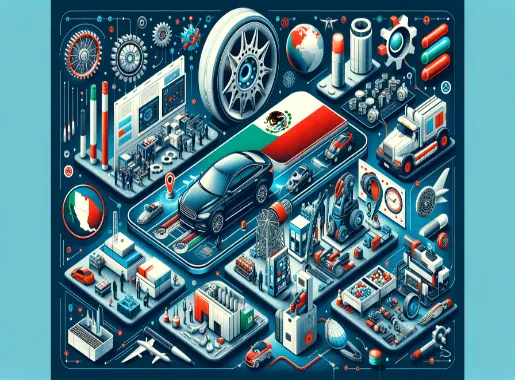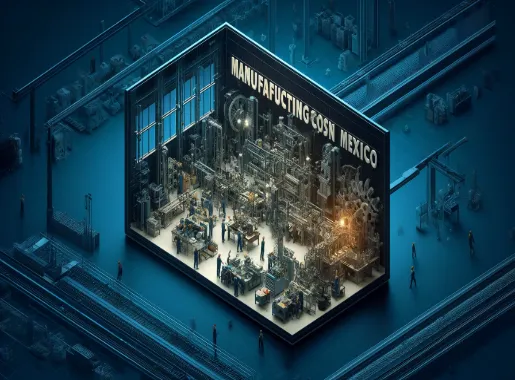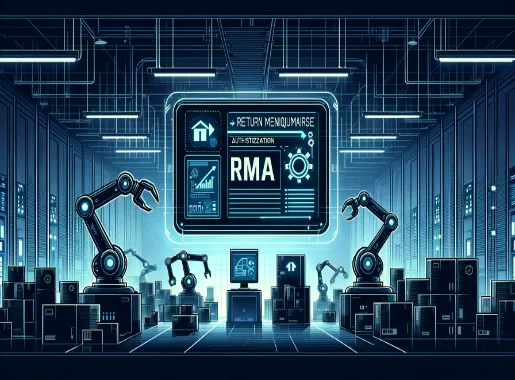Best Manufacturing Practices To Transform Your Operations
Manufacturing is pivotal to our global economy, serving as the backbone of innovation and product delivery. Embracing best practices within this sector isn't merely a procedural decision; it's a strategic one that propels businesses towards excellence and resilience. In today’s dynamic environment, where technological advancements and globalization redefine the traditional manufacturing landscape, adopting proven strategies becomes crucial for maintaining competitive edge and fostering long-term success.
Core Best Practices
The core best practices in manufacturing revolve around three primary pillars: focusing on people by empowering and training them while prioritizing safety; maintaining quality and consistency through GMP, standardization, and thorough documentation; and enhancing efficiency and optimization through Lean principles and judicious use of automation. These practices are not just strategies but essential components that should be integrated into the DNA of manufacturing operations to ensure sustained success and growth.
Focus on People: Empowerment, Training, Safety
The cornerstone of any successful manufacturing operation is its people. An engaged and proficient workforce not only drives production but also fosters a collaborative and innovative workplace environment.
- Empowering employees through targeted training and development initiatives is crucial. These programs should not only focus on enhancing technical skills but also on promoting problem-solving and leadership qualities among staff.
- Cross-training is another vital strategy. It equips employees with a broader range of skills and knowledge, which enhances flexibility in staffing and operations. This approach not only boosts employee morale by providing variety and growth opportunities but also increases the overall resilience of the organization.
- Equally important is the establishment of a robust culture of safety. Prioritizing safety ensures compliance with health and safety regulations and reduces workplace accidents, which is essential for maintaining uninterrupted operations. More importantly, a safe environment supports a more satisfied and secure workforce, which is instrumental in achieving long-term productivity and success.
Quality & Consistency: GMP, Standardization, Documentation
Quality of manufacturing and consistency are the bedrocks of manufacturing excellence.
- Adhering to Good Manufacturing Practices (GMP) is fundamental. GMP encompasses all aspects of production, from the raw materials used to the training of the staff and the maintenance of production equipment. Implementing these practices ensures that products are consistently produced and controlled according to quality standards.
- The benefits of GMP extend beyond compliance. They play a critical role in building consumer trust and safeguarding the brand’s reputation by ensuring that the products are safe and effective. To support this, standardized processes are vital. They minimize variability, which can lead to defects and inconsistencies. Standardization simplifies training and cross-training as well, as employees face a uniform set of procedures.
- Documentation is another pillar of quality and consistency. It provides a written trail that details all procedures and modifications and supports the traceability of products. In environments driven by quality control measures, documentation helps in identifying areas for improvement, facilitating continuous improvement and operational excellence.
Efficiency & Optimization: Lean Manufacturing, Automation
Efficiency in manufacturing is significantly enhanced by adopting Lean manufacturing principles and optimization.
- Lean manufacturing focuses on minimizing waste without sacrificing productivity. It involves identifying value streams and streamlining processes to enhance flow and reduce cycle times. The goal is to produce exactly what is needed, when it is needed, and in the amount needed, which reduces manufacturing cost and increases product quality.
-
Automation
is another critical factor in the optimization of manufacturing
processes. It offers substantial benefits in terms of increased efficiency and
productivity. Automated systems can operate around the clock and carry out
repetitive tasks more quickly and accurately than human workers, which
significantly boosts output and reduces human error.
However, the key to successful automation lies in finding the right balance between automated systems and human expertise. While automation can handle repetitive tasks, human oversight is essential for managing complex operations and making strategic decisions based on nuanced judgements. This balance ensures that the strengths of both humans and machines are leveraged to achieve the best possible outcomes.
Advanced Best Practices for the Modern Era in Manufacturing
As we advance further into the 21st century, the adoption of advanced best practices is critical for manufacturers seeking to stay competitive in a rapidly evolving industry. Supply chain visibility, sustainability, and technological integration are not merely trends but necessities that will define the future of manufacturing.
Supply Chain & Visibility: Transparency, Risk Management
In the contemporary manufacturing landscape, the significance of an efficient, transparent supply chain and risk management cannot be overstated. Enhanced visibility and transparency is essential not just for tracking inventory and ensuring timely deliveries, but also for enabling proactive risk management. This approach helps in identifying potential disruptions early, allowing companies to implement effective mitigation strategies.
To further bolster supply chain resilience, manufacturers are increasingly building redundancy into their systems. This might mean sourcing critical materials from multiple suppliers or maintaining higher inventory levels for key components. Such strategies ensure that operations can continue smoothly even when unexpected disruptions occur.
Moreover, the integration of advanced technologies plays a crucial role in achieving real-time data transmission and communication. Tools like RFID tags, GPS tracking, and cloud-based supply chain management software provide live updates that enhance decision-making and operational efficiency. These technologies not only improve transparency but also enable a more agile response to the dynamic global market conditions.
Sustainability: Environmental & Resource Management
Sustainability is moving to the forefront of manufacturing priorities due to growing environmental concerns and consumer demand for green products. Eco-friendly manufacturing practices are becoming essential in reducing the ecological footprint of production processes. This includes initiatives to minimize waste and reduce energy consumption, which not only help protect the environment but also lead to cost savings.
Sustainable sourcing is another critical area of focus. This involves selecting materials that are not only less harmful to the environment but are also sourced responsibly to ensure the preservation of natural resources for future generations. Whether it’s opting for recycled materials or choosing suppliers that adhere to sustainable practices, these decisions can significantly impact the environmental sustainability of manufacturing processes.
Technological Integration: Digital Transformation, Data Analytics
-
The digital transformation within manufacturing sectors is revolutionizing how businesses operate. Embracing digitalization leads to enhanced process efficiencies and smarter decision-making. With the help of sophisticated software and automation tools, manufacturers can streamline operations, reduce downtime, and increase productivity.
-
Data analytics is at the heart of this transformation. By leveraging big data, manufacturers can gain deeper insights into every aspect of their operations, from supply chain logistics to production efficiency and consumer behavior. This data-driven approach enables precision in manufacturing processes, optimization of resources, and better alignment with market demands.
Investing in technologies such as the Industrial Internet of Things (IIoT) is another step towards future-proofing manufacturing operations. IIoT integrates various machines and equipment through interconnected sensors and software, providing a holistic view of the production floor. This connectivity not only enhances operational transparency but also facilitates predictive maintenance, reducing the likelihood of unexpected machine downtimes and ensuring smooth operations.
Implementing Best Practices in Manufacturing: A Strategic Approach
Adopting best practices in manufacturing is a critical step towards achieving operational excellence. However, the process of implementation should be strategic and well-planned to ensure success. Here are essential guidelines for effectively integrating these practices into your manufacturing operations.
Start Small and Scale Strategically
When integrating new processes or technologies, starting small allows for manageable testing and refinement. Choose a specific area of your production line or a single process where improvements can be most impactful. This focused approach helps in isolating variables and understanding the direct benefits of the implemented changes. Once the pilot project proves successful, gradually expand the scope and scale the practices strategically across other areas of the operation. This phased scaling helps in mitigating risks and allows for adjustments based on learned experiences.
Invest in the Right Tools and Technologies
For any manufacturing firm, investing in the right tools and technologies is pivotal. This does not necessarily mean opting for the most expensive options but rather choosing solutions that best align with your operational needs and goals. Whether it's advanced machinery, ERP software, or AI-driven analytics tools, the chosen technology should enhance efficiency, improve accuracy, and support your workforce. Prioritize investments that offer scalability and flexibility, allowing your business to adapt as it grows and as market conditions evolve.
Continuously Monitor and Track Progress
Implementing best practices is not a set-and-forget process. Continuous monitoring and tracking of progress are crucial. Use key performance indicators (KPIs) relevant to the new practices you have put in place. Monitoring these KPIs will not only provide insights into how well the practices are performing but also highlight areas that may require further adjustment or enhancement. Regular audits and reviews of operational processes ensure that the practices remain aligned with the company’s objectives and are delivering the expected outcomes.
Seek Expert Advice and Training When Needed
The complexity of modern manufacturing systems often requires specialized knowledge that might not be readily available within your organization. Seeking expert advice is beneficial when implementing new technologies or processes. Professionals in the field can provide insights and guidance based on extensive experience and industry benchmarks. Additionally, invest in training your staff to handle new systems and technologies efficiently. Adequate training ensures that employees are competent and confident in their roles, leading to smoother transitions and better adherence to best practices.
Seek Expert Advice!
To deal with the complexities of modern manufacturing, companies must adopt a systematic approach to implementing best practices. By starting small, investing wisely, continuously monitoring progress, and seeking expert advice, manufacturers can ensure that their operations are not only efficient but also poised for future growth and innovation. If you're looking to enhance your manufacturing processes, consider consulting with experts from AMREP Mexico, a leader in Mexican Production Management Solutions. Our experienced engineers are ready to help you integrate these practices smoothly and effectively.
Let us know how we can assist you in optimizing your manufacturing operations.
Reference:
https://en.wikipedia.org/wiki/Good_manufacturing_practice
https://en.wikipedia.org/wiki/Lean_manufacturing


